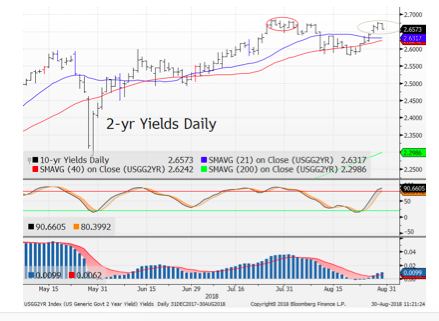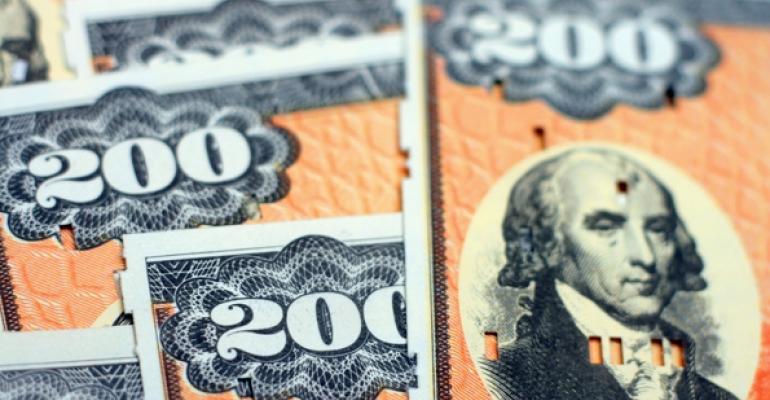The minor retreat in yields and steepening of the curve is in my view totally a function of illiquid summer trading, meeting oversold technicals into supply.
I can skew that action by trying to portray the Fed as somehow more dovish than it was a couple of weeks ago, or how the trade stuff with Mexico and maybe Canada represents risk off or the relatively quieter tone to emerging markets. I mean, I could attempt to say the market moved because of X, but just as readily offer a counterbalancing Y. I think it’s all noise.
That doesn’t mean I’m oblivious to, potentially, the dollar boosting issue from, you name it, Turkey/Italy/Argentina/Venezuela or the relief that accompanies an arm-twisted force of some version of a new NAFTA. Problem with all that is headlines could change at any moment, and the China trade work remains out there. Did I mention a Brexit deal? There is a lot out there that seems to outweigh U.S. fundamentals (which I think are rather steady, meaning a balance that isn’t providing much rate direction) and I don’t see that changing. I expect rate will trade sideways, more or less, into the Federal Open Market Committee. Corrective technical steepening or rate retreat is just that; I wouldn’t attach it to a given headline.
I think the market will remain very much in the range confines of the last couple of weeks. Two-year Treasurys look rather bullish in terms of a rally with somewhat oversold stochastics and what some are calling a double top. I don’t see it so clearly, the double top, but could draw you a compelling chart, which I’ve done below. Maybe that’s enough to take 2s to the 40-day moving average at 2.62 percent or approach very recent lows near 2.58 percent. I doubt the latter, not this close to the FOMC hike. A second chart of 2s, with more perspective, should held keep bullish temperament sedated. I think this channel dominates into the FOMC and I really can’t see much of a rally beforehand.

I suspect the curve can steepen a wee bit, but that’s totally technical as well. Maybe the dollar’s recent retreat—though not against the Emerging Markets Currency Index—will encourage that to a small degree, say 2- and 10-year Treasurys to the 21- or 40-day MAs near 25 to 26 basis points. The same influences over the longer term are in place: the Fed, emerging market stress (Argentina hikes to 60 percent!) and those are not going away. Also, and it pains me to acknowledge this, but the NAFTA “progress” does extract a risk element to risk markets.That won’t make me bullish stocks, but it’s not a reason to be bullish bonds, let alone the front end, either.
Oh, oh, oh … did you see Personal Income and Spending? Totally, as expected, so a big yawn to start the Third Quarter, but I would like to point out the price data was rather benign as well: personal consumption expenditures up 0.1 percent month-over-month, core up 0.2 percent but a “low” one at 0.156 percent. I think we’re about to see a bit of calming in these sorts of inflation figures and talk about the contrast with consumer price index (which was up 2.9 percent in July and 2.4 percent at the core level). That the market didn’t move on PCE is relevant. I’ll note that 10s versus the year-over-year PCE figures (last chart) looks okay. I mean that 10s are the cheapest they’ve been to the figures in about 7 years. Historically, the spread has been much wider, so this can be a case of the glass being half full since at wider times YoY PCE figures weren’t much different than they are today. I’ll weigh in on the “double bottom” potential, implying a wider spread and would be content to see that spread nearer 150 bps at the headline level, implying a 50 bp widening, at some point. Maybe the added 50 bps is part of the impact of quantitative easing that I discussed above?





